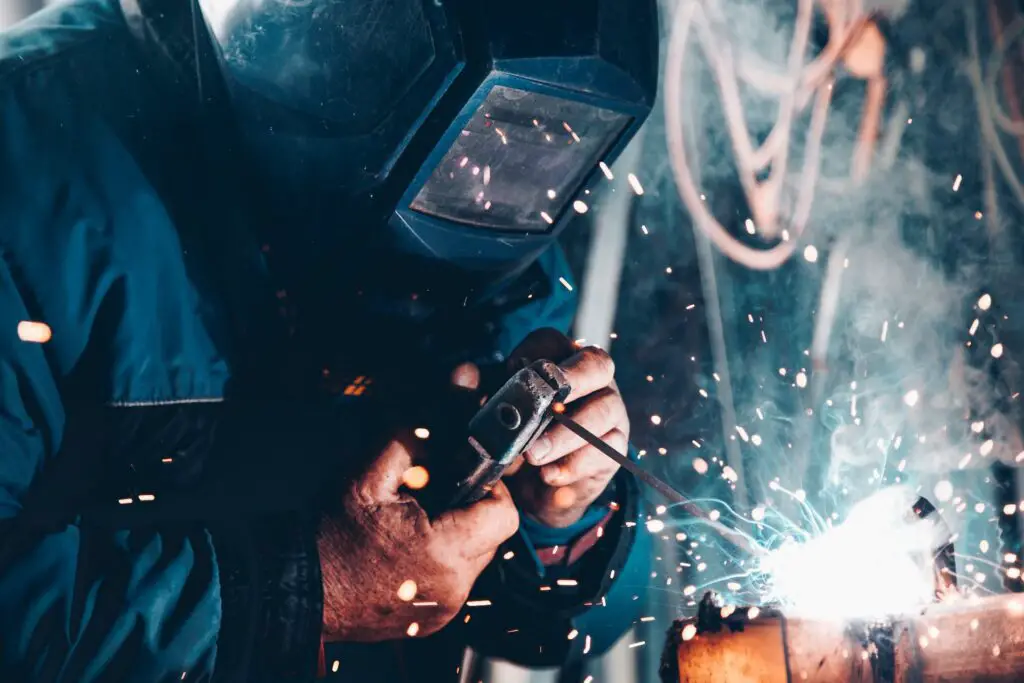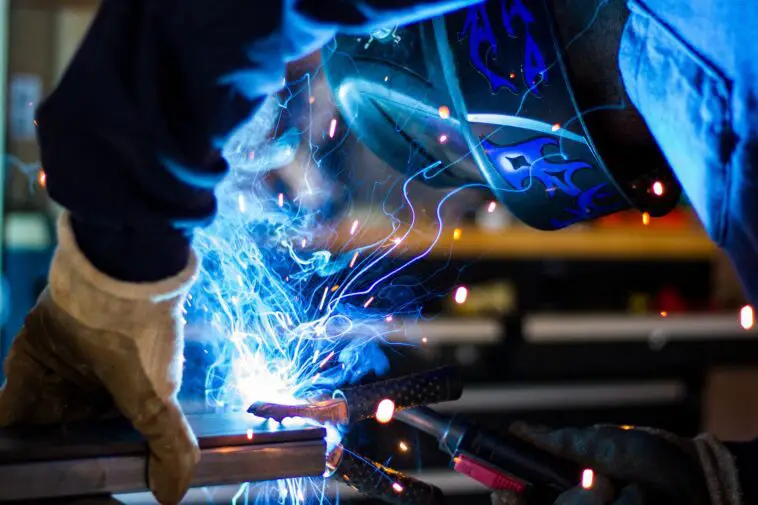Sheet metal welding plays a crucial role in joining metal components together, providing strength and durability to various applications. Understanding different welding techniques and their applications is essential for professionals in industries such as automotive, construction, and manufacturing. In this article, we will explore various sheet metal welding techniques, their advantages, applications, and best practices.
Sheet metal welding involves joining two or more metal sheets together using different welding techniques. It is widely used in industries where lightweight and strong structures are required. Let’s delve into the details of some popular sheet metal welding techniques.
1. Resistance Spot Welding
Resistance spot welding is a commonly used technique for joining sheet metal. It involves applying pressure and passing an electric current through the metal sheets, creating heat that melts and fuses the sheets together. This technique is fast, efficient, and suitable for high-volume production.
2. Gas Metal Arc Welding
Gas Metal Arc Welding (GMAW), also known as MIG welding, utilizes a continuous wire electrode and shielding gas to protect the weld pool. It offers high welding speeds, excellent control, and is applicable to a wide range of sheet metal thicknesses. GMAW is commonly used in automotive and fabrication industries.

3. Laser Welding
Laser welding is a precise and efficient technique for joining sheet metal. It employs a high-energy laser beam to melt and fuse the metal sheets together. Laser welding offers narrow heat-affected zones, minimal distortion, and high welding speeds. It is commonly used in the aerospace and electronics industries.
4. Tungsten Inert Gas Welding
Tungsten Inert Gas (TIG) welding, also known as Gas Tungsten Arc Welding (GTAW), utilizes a non-consumable tungsten electrode and an inert gas for shielding. TIG welding provides precise control, excellent weld quality, and is suitable for thin sheet metal applications. It is widely used in industries that require high aesthetic standards, such as architectural metalwork and stainless steel fabrication.
Advantages of Sheet Metal Welding
Sheet metal welding offers several advantages over other joining methods:
Strength and Durability: Welded joints provide high strength and durability, ensuring the longevity of the assembled structures.
Weight Reduction: Welding allows for the elimination of additional fasteners, reducing the weight of the final product.
Cost-Efficiency: Welding eliminates the need for costly connectors or fasteners, resulting in cost savings during the manufacturing process.
Versatility: Sheet metal welding can join various metals, including steel, aluminium, and stainless steel, catering to a wide range of applications.
Applications of Sheet Metal Welding
Sheet metal welding finds extensive applications in various industries:
Automotive: Welding is used in the production of car bodies, exhaust systems, and chassis, providing structural integrity and crash resistance.
Construction: Sheet metal welding is essential for fabricating steel structures, HVAC systems, and architectural elements.
Manufacturing: Welding is utilized in the production of appliances, furniture, and industrial machinery.
Aerospace: Welding plays a crucial role in the assembly of aircraft structures, ensuring strength and reliability.
Factors to Consider in Sheet Metal Welding
While performing sheet metal welding, several factors should be considered for optimal results:
Metal Thickness: The thickness of the metal sheets affects the choice of welding technique and parameters.
Material Selection: Different metals require specific welding techniques and compatible filler materials.
Joint Design: Proper joint design and preparation are critical for achieving strong and reliable welds.
Welding Position: The welding position, such as flat, vertical, or overhead, influences the welding technique and equipment used.
Common Challenges in Sheet Metal Welding
Sheet metal welding poses specific challenges that need to be addressed:
Heat Distortion: Sheet metal is prone to distortion due to high heat input during welding. Proper heat management and fixturing techniques can help minimize distortion.
Burn-Through: Thinner sheet metal may be susceptible to burn-through during welding. Adjusting welding parameters and using suitable techniques, such as pulse welding, can prevent burn-through.
Weld Porosity: Porosity, or the presence of gas pockets in the weld, can weaken the joint. Proper shielding gas selection and welding parameter adjustments can reduce porosity.
Surface Preparation: Clean and properly prepared surfaces are crucial for achieving quality welds. Adequate surface cleaning and removal of contaminants are essential.
Best Practices for Sheet Metal Welding
To ensure successful sheet metal welding, follow these best practices:
Proper Training: Obtain proper training and certification to understand welding techniques, equipment operation, and safety procedures.
Fit-up and Alignment: Ensure accurate fit-up and alignment of the metal sheets to achieve strong and uniform welds.
Welding Parameters: Optimize welding parameters, such as voltage, current, and travel speed, for each specific welding application.
Quality Control: Implement quality control measures, including visual inspections and non-destructive testing, to ensure weld integrity.
Safety Precautions in Sheet Metal Welding
Safety should be a top priority when performing sheet metal welding:
Protective Gear: Wear appropriate personal protective equipment (PPE), including welding helmets, gloves, and flame-resistant clothing.
Ventilation: Ensure proper ventilation in the welding area to minimize exposure to welding fumes and gases.
Fire Prevention: Have fire extinguishing equipment readily available and follow fire safety protocols to prevent accidents.
Training and Awareness: Regularly train and educate personnel about welding hazards and safe practices.
Future Trends in Sheet Metal Welding
As technology advances, new trends are emerging in sheet metal welding:
Robotics and Automation: Increasingly, robots are being used for precise and repetitive welding tasks, improving efficiency and reducing human error.
Advanced Weld Monitoring: Real-time monitoring of welding parameters and weld quality using sensors and data analytics allows for immediate corrective actions.
Hybrid Welding Techniques: Combining multiple welding techniques, such as laser and arc welding, offers enhanced control, speed, and quality.
Lightweight Materials: With the growing demand for lightweight structures, welding techniques are being developed for joining dissimilar lightweight materials like aluminum and composites.
Conclusion
Sheet metal welding techniques are essential for joining metal sheets in various industries, providing strength, durability, and cost-efficiency. Understanding the different welding methods, their applications, and best practices is crucial for achieving high-quality welds and ensuring product integrity.
FAQs
Can sheet metal welding be performed on different types of metals?
Yes, sheet metal welding can be performed on various metals, including steel, aluminum, and stainless steel.
Are there any safety precautions to consider during sheet metal welding?
Yes, it is important to wear appropriate personal protective equipment (PPE), ensure proper ventilation, and have fire prevention measures in place.
What are the advantages of sheet metal welding over other joining methods?
Sheet metal welding offers advantages such as strength, weight reduction, cost-efficiency, and versatility compared to other joining methods.
What are some common challenges in sheet metal welding?
Common challenges in sheet metal welding include heat distortion, burn-through, weld porosity, and surface preparation.
What are the future trends in sheet metal welding?
Future trends include robotics and automation, advanced weld monitoring, hybrid welding techniques, and the use of lightweight materials.




